
Cambridge - Its Railways and Station[Source:
Darren Kitson]
Part 9: The Railway at Cambridge post British Rail Image availability is rather better for this period, not least because most are colour, so Part 9 is taking advantage of this. The images below are in no particular date order as this allows ease of comparisons.
In March 2003 we see, 317345 at platform 3 of Cambridge station. This unit was one of original batch originally allocated to St Pancras - Bedford services before being displaced by Class 319. It is still in NSE livery, slightly faded, but bears the logo of West Anglia Great Northern Railway (WAGN). This was a neat franchise covering both routes from London to Cambridge and onwards to King's Lynn including branches, Moorgate services and King's Cross - Peterborough services. Original livery was an odd but not unattractive white, grey, red and blue but was later changed to a deep shade of purple. WAGN, headquartered at Cambridge, was originally owned by Prism Rail (hence the style of logo seen above) but later became part of National Express.
Looking like a station that had been closed a day or two previously, above is the view south along platform 4 in April 2009. Not a single train can be seen, even in the sidings - very unusual indeed. In the foreground the Tony Carter bridge can be seen, commonly known as 'the railway cycle bridge'. See below.
Above is another view of the Tony Carter bridge taken on the same day as the previous image. The bridge, named after a local councillor, was actually opened towards the end of the BR era in 1991. It provides a short cut for pedestrians and cyclists between Romsey Town and the railway station and Devonshire Road. Its construction was long overdue; previously people from Romsey Town had to cross Mill Road bridge and then trudge along Devonshire, Tennison and Station Roads to reach the station. The bridge is enclosed and consists of a cycleway with a narrow pavement along the north side. Undeniably useful as the bridge is, you never quite feels 100% safe walking across it alone and especially after dark.
The view north, above, from platform 4 in March 2008. By this time, platforms 1 and 4 had been divided into a and b sections in connection with trains dividing at Cambridge. Better waiting shelters and platform seating are present, having been provided by NSE but otherwise no evidence of NSE now remains, the drab grey having replaced the former cheerful red. In the distance c Mill Road bridge is seen.
Above the south end of Cambridge station is seen in March 2007. This image rather makes the point about overhead catenary being something of an eyesore. A First Capital Connect Class 365 waits at platform 2 while a Class 317 of the same company arrives at platform 3. In the foreground the road which once led to the goods sheds is no longer rail enthusiast friendly while in the left background, in front of the mill, work on the guided busway is sort of underway. Note that the track fan which once led into Coalfields sidings is still in situ at this time.
Above, on an unknown date Class 365 365530 stands at Cambridge. The unit is still in NSE livery but unbranded and has yet to be made a 'happy train' (see below).
Above, we see a pair of First Capital Connect (FCC) Class 365 units in the south bay in June 2011. By this time the class was in 'happy train' form; a nickname given to them due to the shape of the panel and grille on the lower cab front and later style lights. This was a retrospective modification to provide the formerly stuffy cabs with air conditioning. In 2014 FCC became part of the new Govia Thameslink, Southern, Great Northern (or something like that) franchise. It probably won't last long.
Above, a Class 170 DMU sits in platform 5 in August 2004 displaying the 'One' name and livery. On the left a WAGN Class 317 can be seen with illiterate form of logo and a station running-in board. The 'One' version of the running-in board was quite smart and stood out well but, of course, these boards change frequently according to who is managing the station. The normal haunts of East Anglia-based Class 170 units in respect of Cambridge are the Ipswich and Norwich services.
Above, we see the Network Rail test train top and tailed by a pair of Direct Rail Services (DRS) Class 37 locomotives at Cambridge North in April 2008. Even in 2015 a few of the half-century old Class 37s remain in service as do a few examples of other equally aged diesel types. Much of DRS's work comprises jobs such as that seen above and nuclear flask traffic. The tracks in the foreground which once entered the extensive goods yard now serve EMU sidings and the carriage washing plant. In the background, the former engineers yard and Midland Railway coal yard has been built on but, over the nearest vehicle of the test train, the former engine shed stores building still stands.
Above, a Class 47 47818 hauls a diverted Liverpool Street - Norwich train through Cambridge in August 2004. This was due to engineering work at Ipswich. The vehicle behind the locomotive is a DVT (Driving Van Trailer). These were converted from standard brake-end coaches and allow push-pull operation with a locomotive at the other end of the train. A handful of Class 47 locomotives remain in service in 2015 as well as the Class 57 conversions. At the time of the photograph 47818 was owned by Cotswold Rail and hired to One. This illustrates the complexity of rail 'privatisation'; someone owns something, that something is then leased or hired to someone else who may then sub-hire it someone else with maintenance probably contracted to someone else and the original someone else then has to pay Network Rail for track access and may also have to hire in suitably qualified drivers and other staff. On top of all that, if something goes wrong massive fines are a real possibility. Got that? Good. 47818 was new in traffic in December 1965 as D1917 and was still in service at the time of writing.
In May 2006 Central Trains 170507 is seen at platform 6. The service was, and still is, Birmingham New Street - Stansted Airport but on this occasion engineering work had closed the line south of Cambridge. The nicety, or otherwise, of the Central Trains livery was a matter of opinion. As of 2015 this service is now operated by Cross Country and runs hourly throughout the day. Cross Country makes use of Coldhams Lane depot with early morning trains commencing from Cambridge and the last trains at night terminating at Cambridge. To this end Cross Country have crew based at Cambridge. platform 5 was later to be shortened in order to accommodate the lift and stairs for the footbridge accessing new platforms 7 and 8.
In May 2006 'One' class 156416 arrives at platform 5 with a service to Norwich. The name might have looked better on trains had the full name, One Railway, been used. There were instances of intending passengers seeing the name and mistakenly thinking it meant the train was all first class accommodation. Click here to continue Part 9: The Railway
|
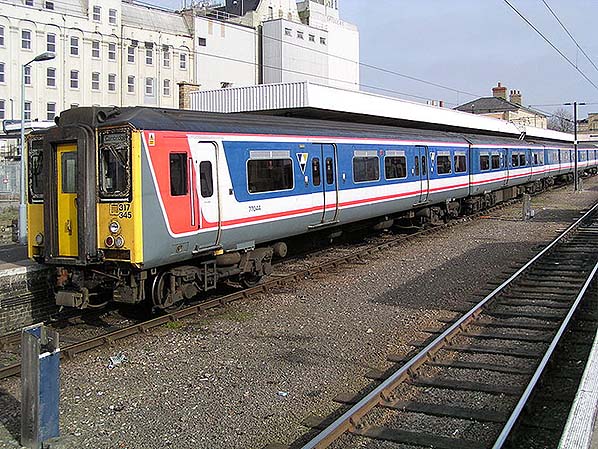
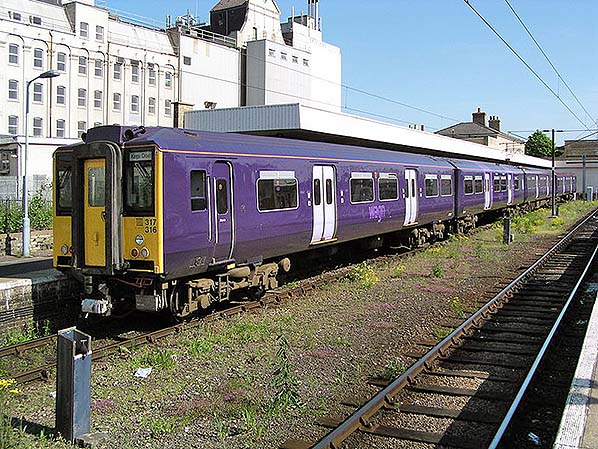
 For comparison with the previous image we see, above, in May 2004, 317316 at Cambridge station. It is in the later WAGN livery which was simple but neat and looked very smart when clean. Unfortunately the company logo is in lower-case lettering; as the logo is the company's initials it should be in upper case so is not correct English. Sadly, there is too much of this nonsense these days. 317316 was another of the original batch. The south bay retains bullhead rails and is becoming quite weedy but, oddly perhaps, the effect is not unpleasant.
For comparison with the previous image we see, above, in May 2004, 317316 at Cambridge station. It is in the later WAGN livery which was simple but neat and looked very smart when clean. Unfortunately the company logo is in lower-case lettering; as the logo is the company's initials it should be in upper case so is not correct English. Sadly, there is too much of this nonsense these days. 317316 was another of the original batch. The south bay retains bullhead rails and is becoming quite weedy but, oddly perhaps, the effect is not unpleasant.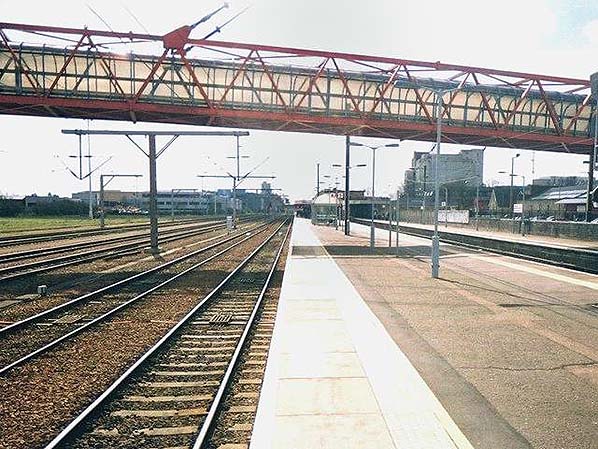
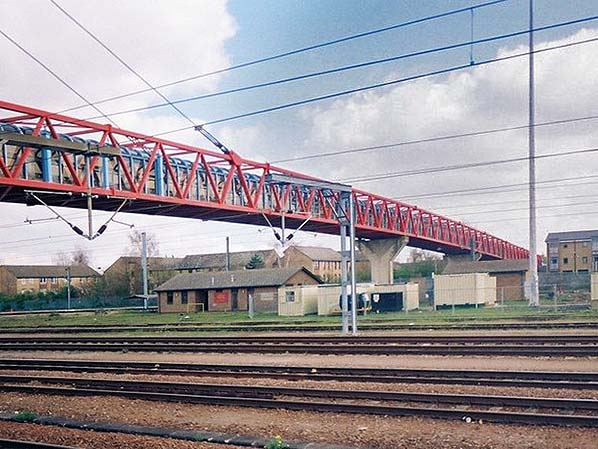
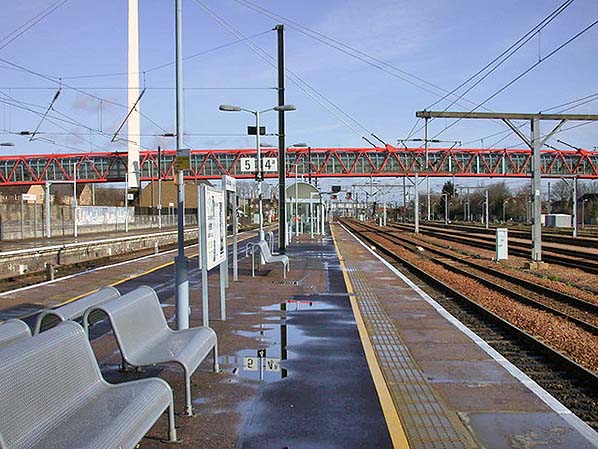
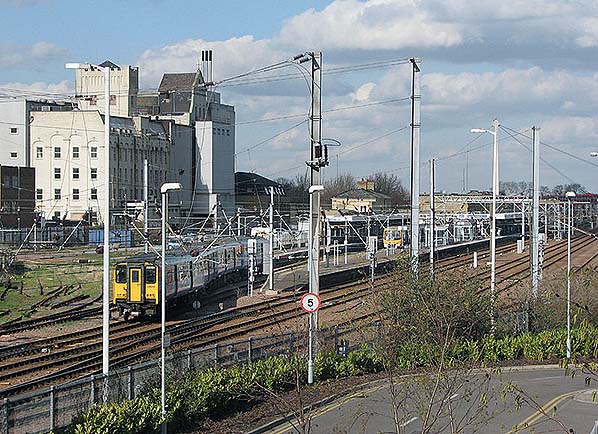
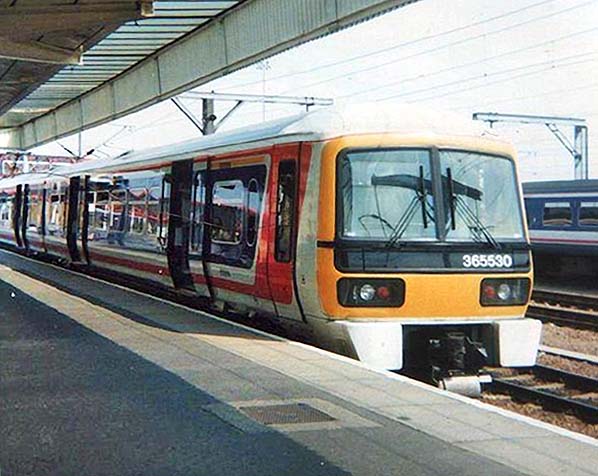
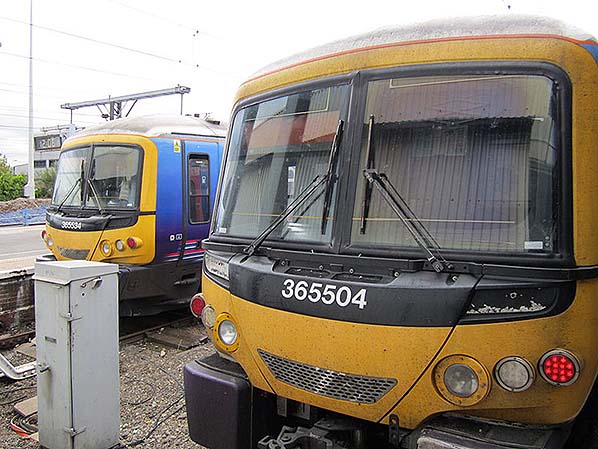
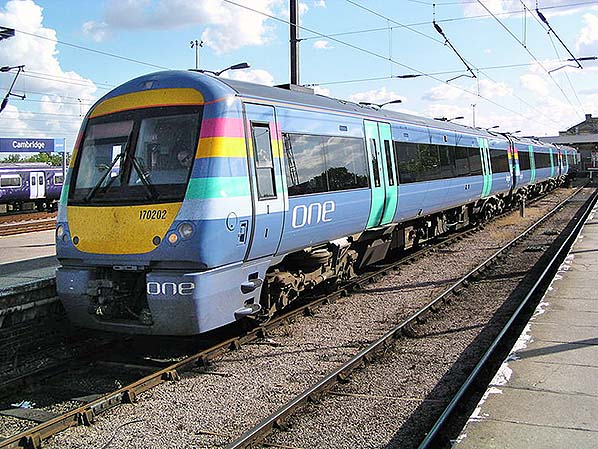
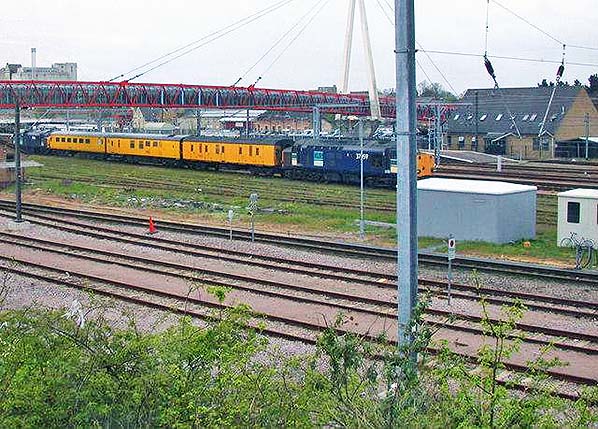
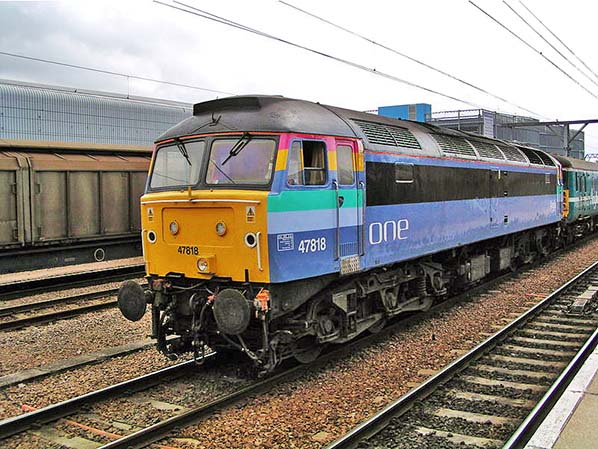
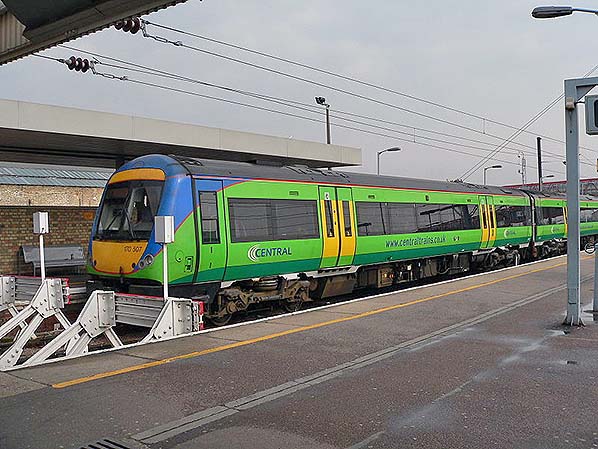
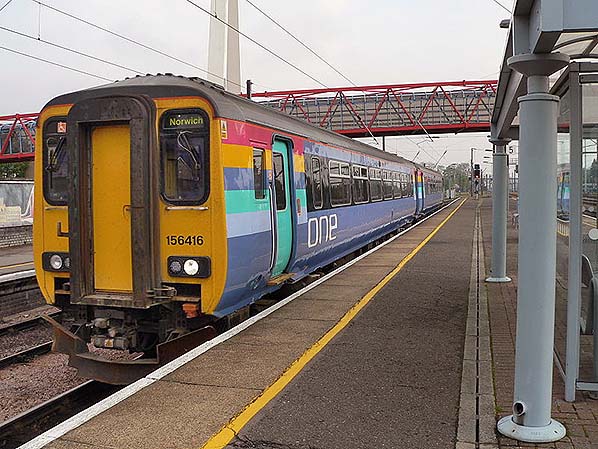

 Home Page
Home Page